“What foolish person, having reached Kashi – the very vessel in which the treasure of liberation is stored – would wish to go elsewhere in search of some trifling wealth?”
Little did I know that the Yoginis would find me in Varanasi as well.
Our next stop was the Chausanthi Ghat. We had heard about the Yogini Temple there, but had also heard that it contained only one shrine, instead of 64 (like in Hirapur and Ranipur Jhariyal).
Shiva’s Exile From Kashi
There was a time when the Earth was in tatters. There was lawlessness and disorder everywhere and the Gods simply couldn’t control the chaos. Finally, Lord Brahma decided that he would ask King Divodasa for help. In addition to being an effective ruler, he was also honest and kind. He agreed to rule from Kashi and restore order back to Earth, but he had a condition. He wanted no interference from the Gods. During his rule the Gods were to remain in their world. Lord Shiva would have to leave Kashi for the duration of his rule.
With King Divodasa on the throne, the Earth thrived. After many years Lord Shiva found that he missed his beloved Kashi. He decided to send emissaries on his behalf to plead his case with King Divodasa. Amongst the many entities he sent were the Yoginis – all 64 of them.
The Yoginis came to Kashi and soon found themselves assimilating into city life. They found work amongst the city dwellers and were soon embedded in the fabric of the city. However, they were unable to find an opportunity to plead Lord Shiva’s case with King Divodasa. Unable to face Shiva with this defeat, they decided to remain in Varanasi.
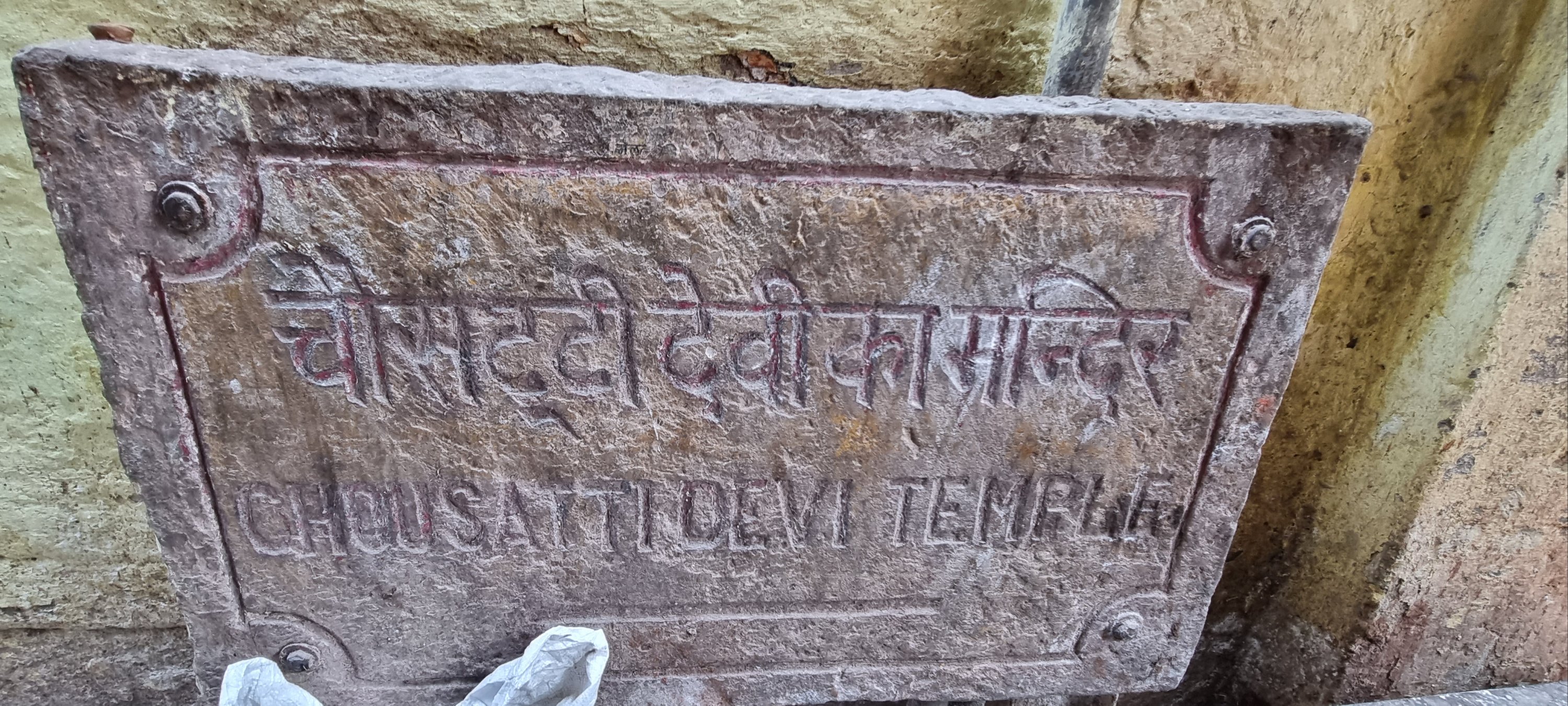
Some scholars have even liked the city of Varanasi to a goddess, saying that it is an embodiment of Shiva’s Shakti. Which is why he yearned to come back to Kashi, he was suffering like a lover separated from his beloved.
It is believed that once upon a time all 64 yoginis had temples in Varanasi, but today there exists only this one. “All of them, all that energy, is contained in this one Devi,” the priest explained. I looked at him uncertainly. The temple wasn’t hypaethral, which is what we popularly believe Yogini temples to be.
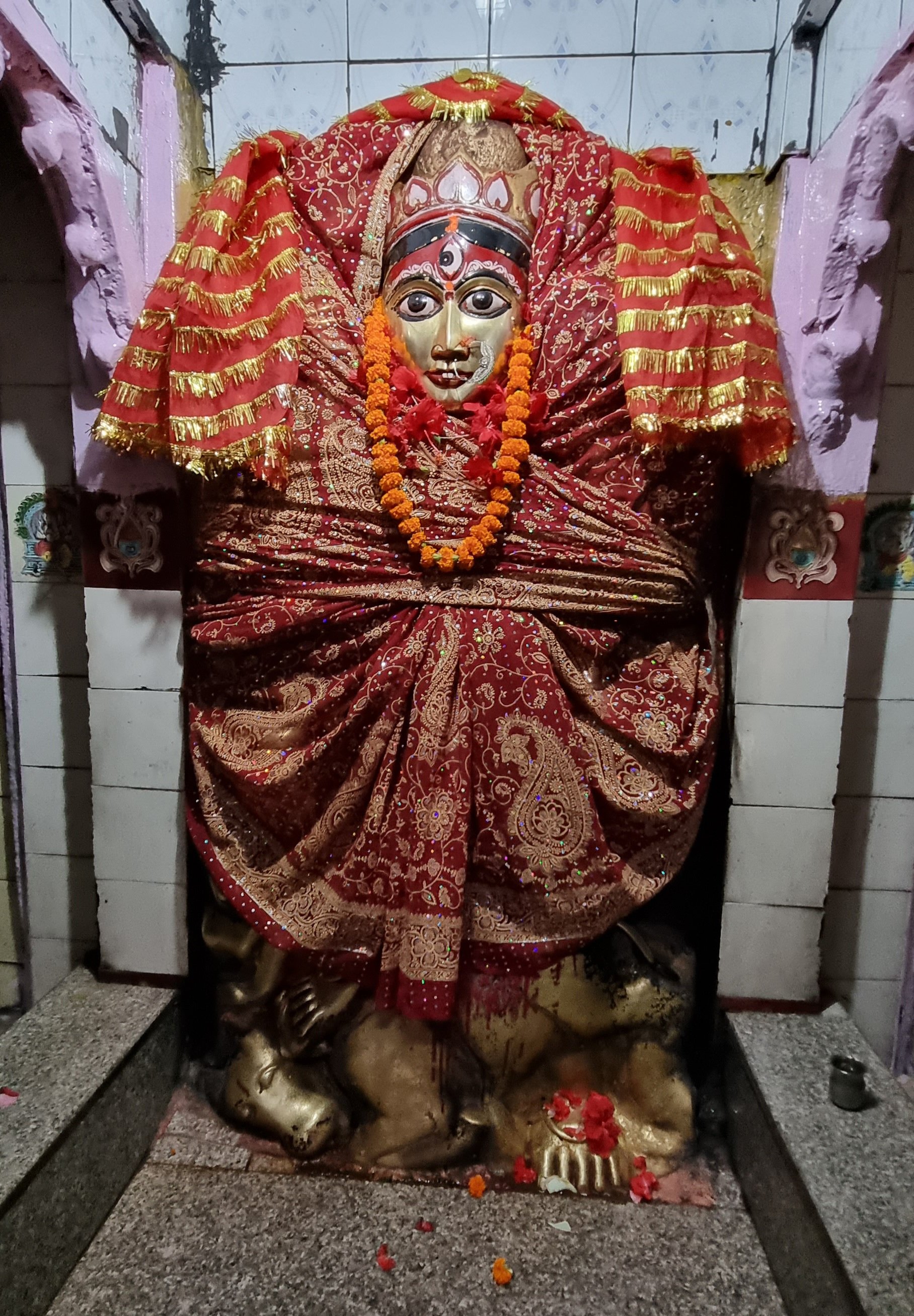
An interesting depiction of the Devi – note the third eye and the animal crushed under the feet. My favorite detail is the ornate nose pin.
The temple has a very small courtyard, where natural light streams in. The space between the temple walls and the sanctum sanctorum (where the parikrama is done) is dark (but not damp). And, interestingly, is filled with ancient shivalingas of different sizes!
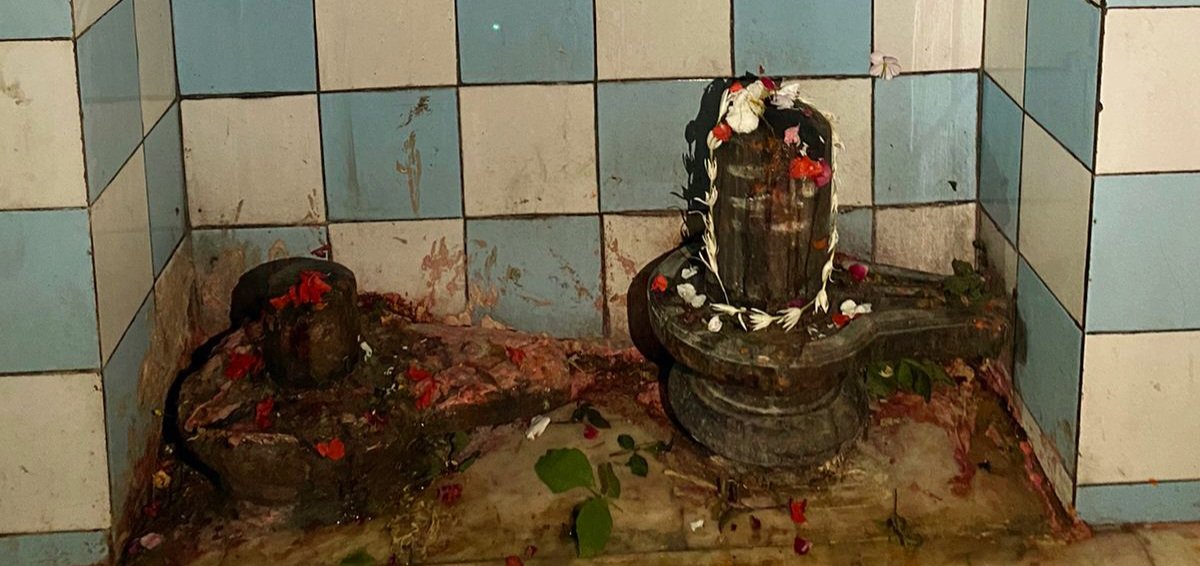
An interesting collection of Shivalingas. However, it was really dark and we had to use our phones to see them.
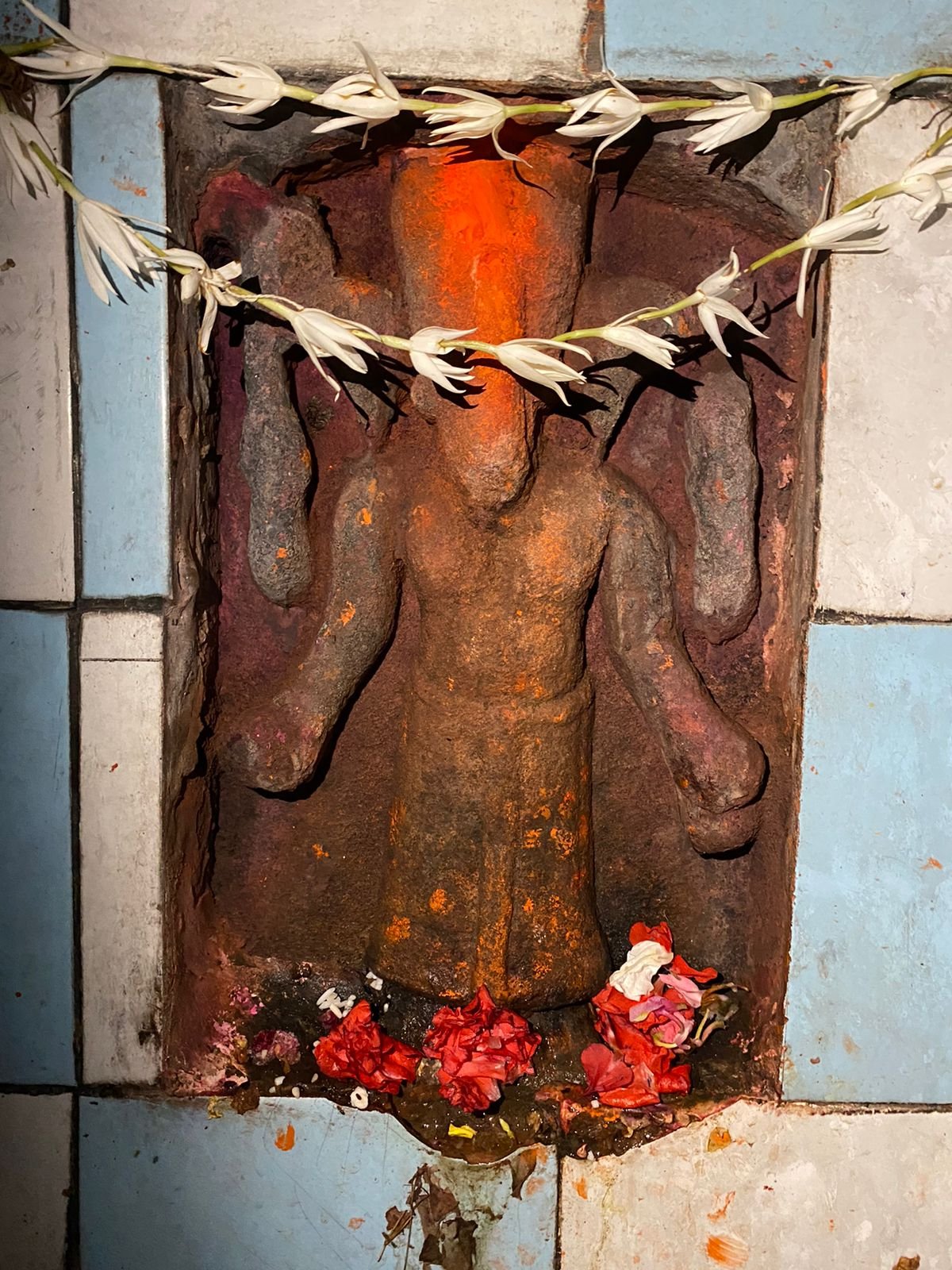
This was carved into the wall, and reminded me a bit of the carvings in the Yogini temples in Orissa.
The Other Devi in the Chausanthi Yogini Temple
Standing opposite the Chausanthi Devi is another devi. From the face we could tell it was Kali Ma and we asked the pujari about the history of the statue. According to him, a King from Bengal once had a dream in which he was instructed to take the Devi to Banaras and make a home for her there. He is said to have sailed the Ganges and carried the statue up the steps of the Chausanthi Ghat and placed it here. The priest was unable to give us any specifics such as dates and names, relegating the story to the stuff of legends, but the story was compelling. I’ve tried to track down references to the story in multiple sources, but was unable to find anything.
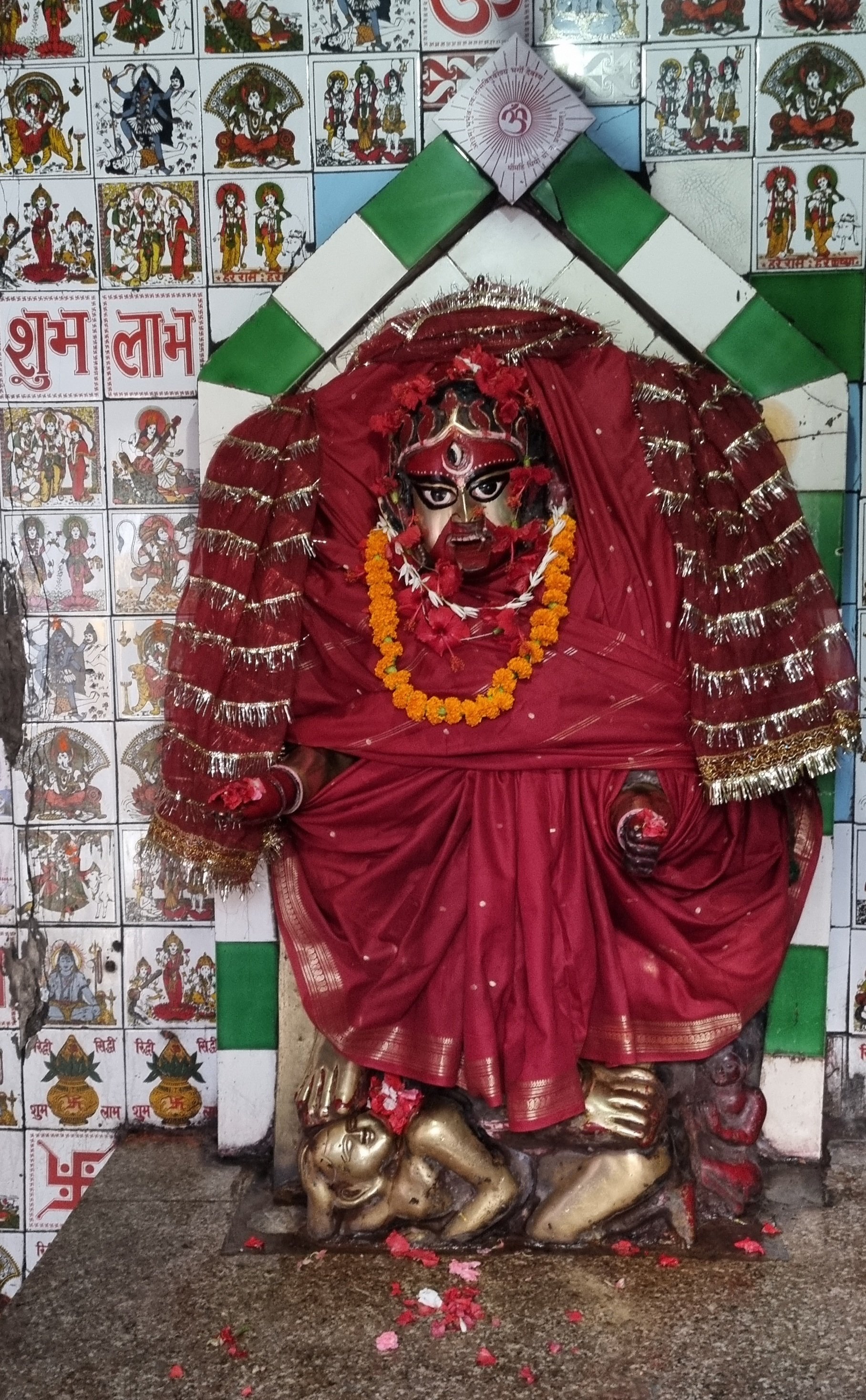
As we turned to leave the Yogini temple, I asked the punditji his name. Pointing to the Chausanthi Yogini and Kala Ma he said “I serve two mas (mothers) so I’m known as ‘Ma-Ma’.”
We boarded our boat again to head to a temple particularly revered by the South Indians – the Vishalakshmi temple.
A Note on the Vishalakshi Temple
‘Vishalakshi’ is the ‘Wide Eyed Goddess’. The Vishalakshi temple was renovated in 1971 with a large contribution from the Tamil fraternity, and it has a completely different vibe from the Yogini temple. For starters, it is jam-packed.
Inside the temple it’s dim and the smoke from the large clusters of incense makes it difficult to see. The main deity is visible from the entrance. It’s enveloped in hundreds of saris that devotees have offered to her. In fact, there is a stall selling saris inside the already crowded temple, and you can purchase one for the goddess if you want to. We elbowed our way through the enthusiastic devotees to get to the other side of the temple. The main deities are encased in glass boxes and the smoke and lack of light makes it difficult to see anything. There are numerous shivalingas here that you can offer your prayers to.
It’s dim inside the temple and the smoke from the large clusters of incense makes it difficult to see. You can see the main deity as soon as you enter. It’s enveloped in hundreds of saris that devotees have offered to her. In fact, there’s a stall selling saris inside the already crowded temple, and you can purchase one for the goddess if you want to. We elbowed our way through the enthusiastic devotees to get to the other side of the temple. The main deities are encased in glass boxes and the smoke and lack of light make it difficult to see anything. There are numerous shivalingas here that you can offer your prayers to.
The Vishalakshi temple finds a permanent place as one of the shakti peethas. Some say Sati’s eye fell at this location, while others say it was her earring. (For a background on this story see the “Natrajasana” chapter in my book Beyond Asanas.) This temple is also connected to two other goddesses – Kamakshi (Love-Eyed) from Assam and Meenakshi (Fish-Eyed) from Madurai.
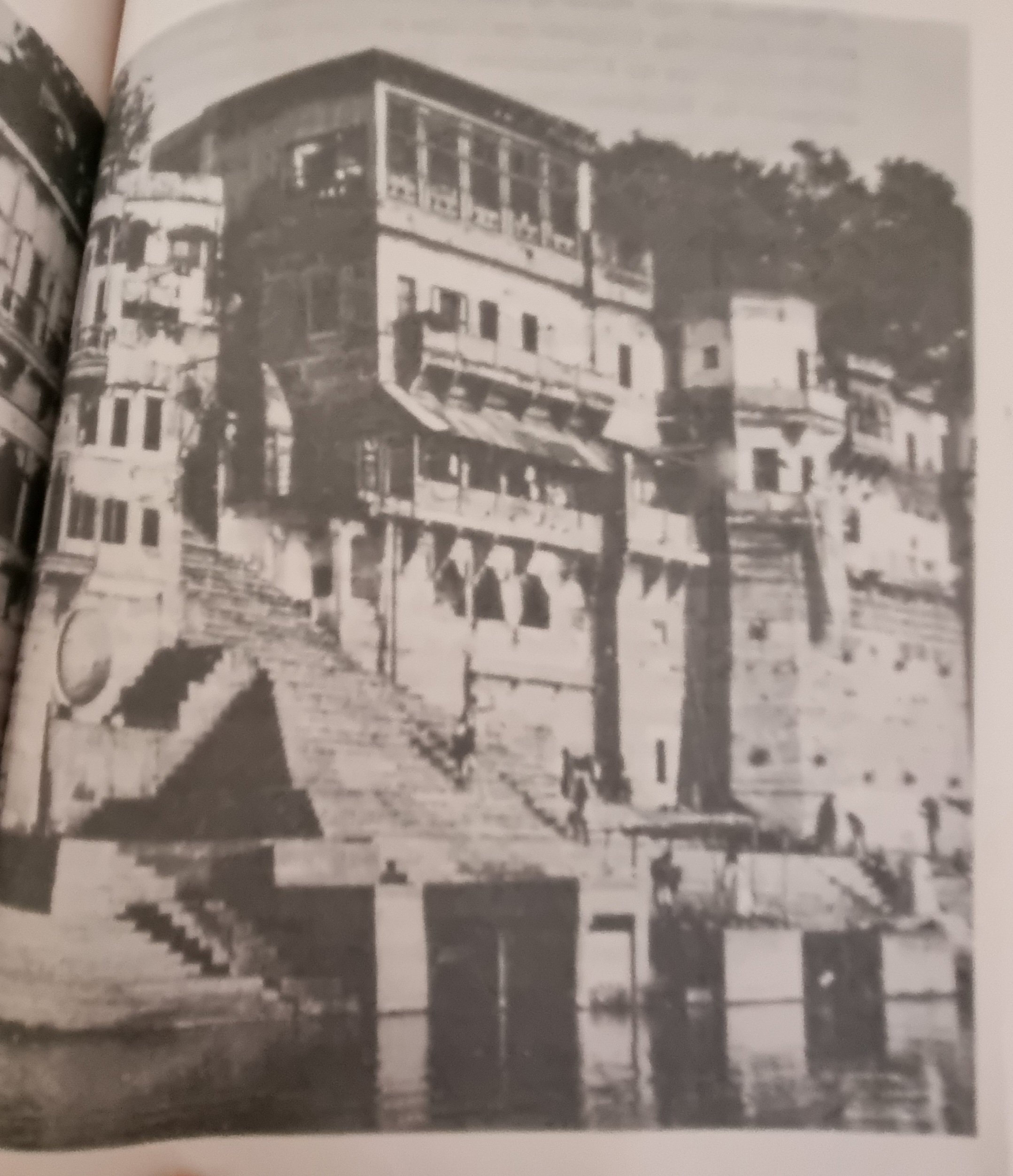
An old picture of the Chausanthi Ghat.
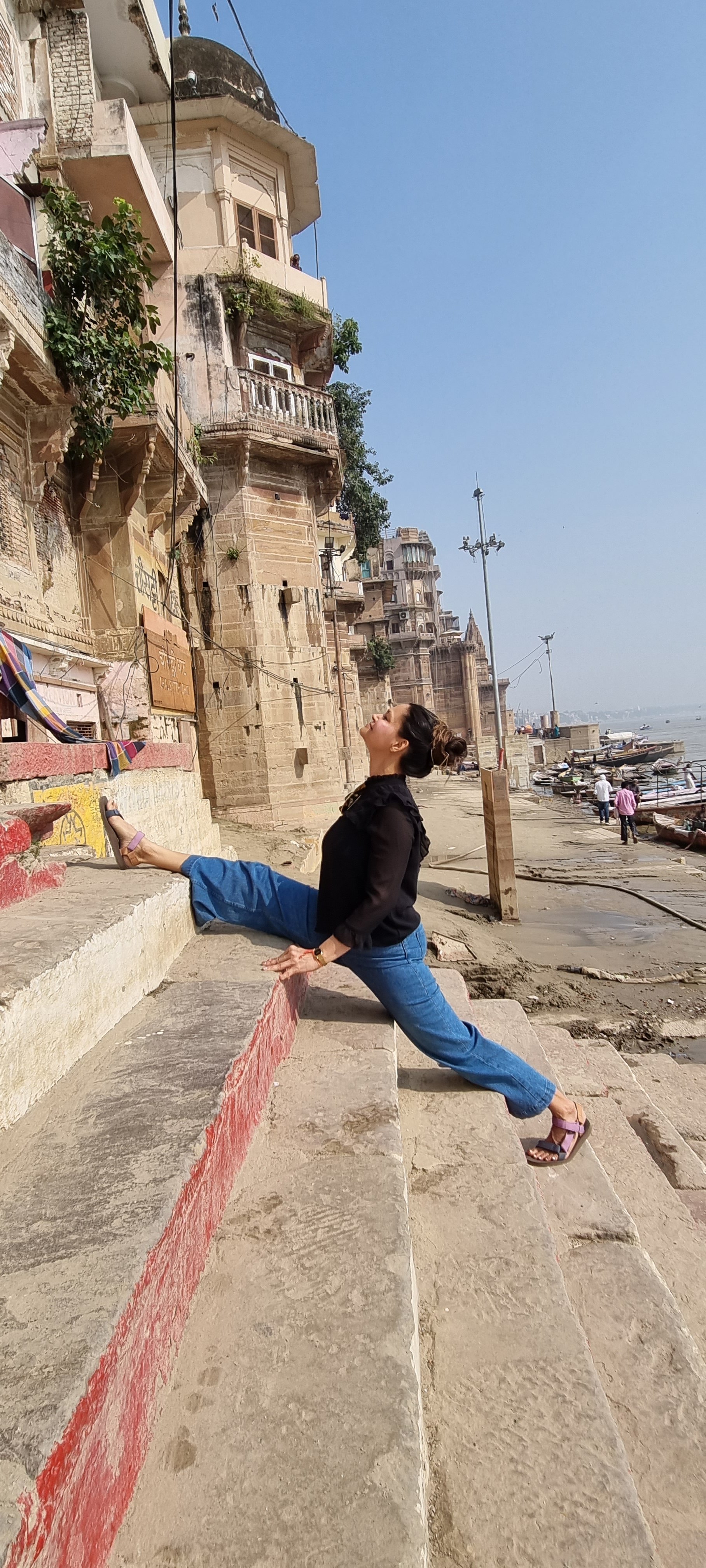
Instagraming at the Chausanthi Ghat in 2022.
[This blog is the final part of a series of blogs about my time in Varanasi. Click here for the previous one.]
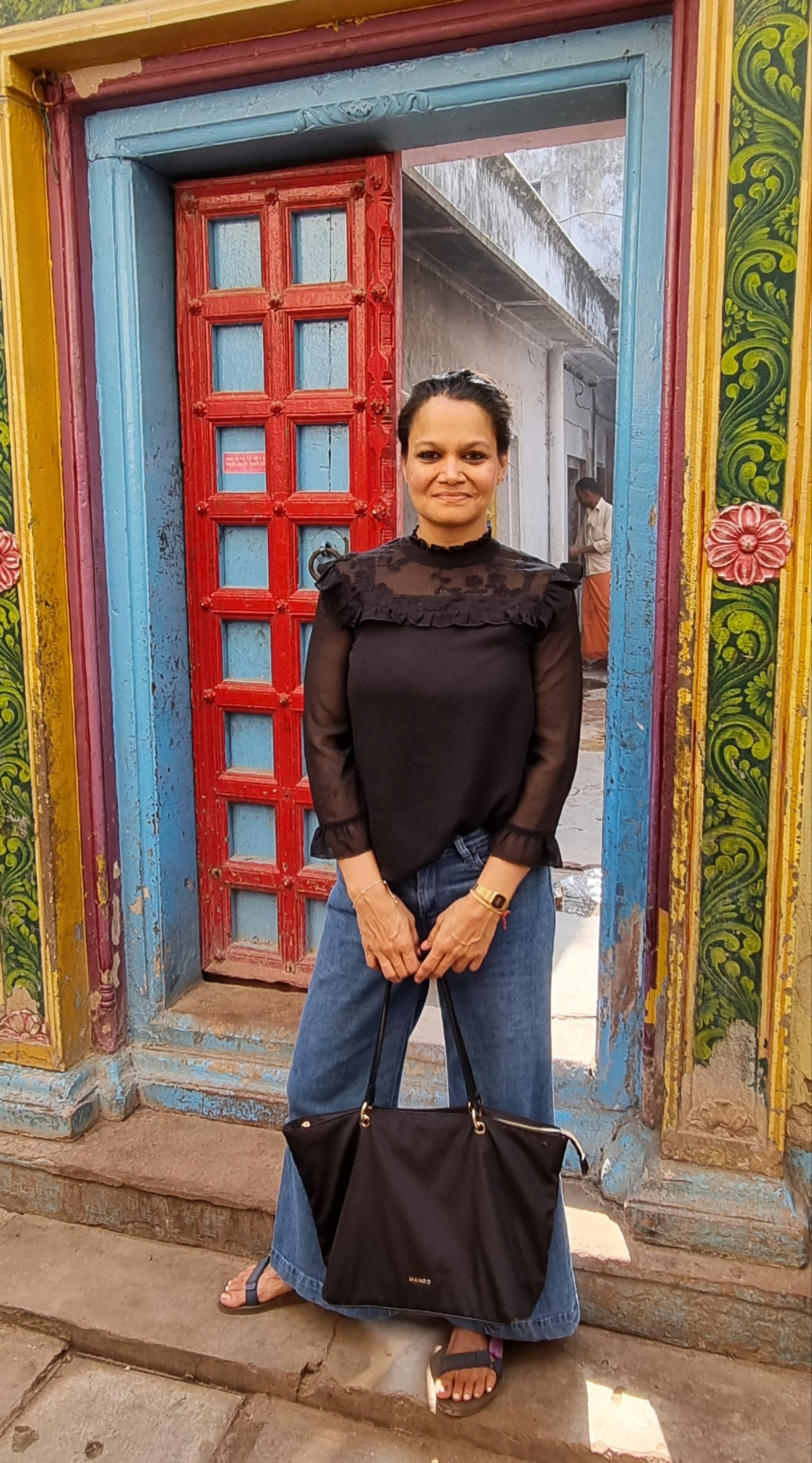
![IMG-20150209-WA0004[1]](https://yogawithpragya.com/wp-content/uploads/2015/02/img-20150209-wa00041-1.jpg?w=300)
![2015-02-15 14.42.00[1]](https://yogawithpragya.com/wp-content/uploads/2015/02/2015-02-15-14-42-001-2.jpg?w=169)
![Photo Collage Maker_0Dymy2[1]](https://yogawithpragya.com/wp-content/uploads/2015/02/photo-collage-maker_0dymy21-1.png?w=300)
![IMG-20150209-WA0009[1]](https://yogawithpragya.com/wp-content/uploads/2015/02/img-20150209-wa00091-1.jpg?w=300)
![2015-02-15 15.11.43[1]](https://yogawithpragya.com/wp-content/uploads/2015/02/2015-02-15-15-11-431-1.jpg?w=300)
![Photo Collage Maker_UYopz9[1]](https://yogawithpragya.com/wp-content/uploads/2015/02/photo-collage-maker_uyopz91-1.png?w=300)
![2015-02-15 15.02.33[1]](https://yogawithpragya.com/wp-content/uploads/2015/02/2015-02-15-15-02-331-1.jpg?w=169)